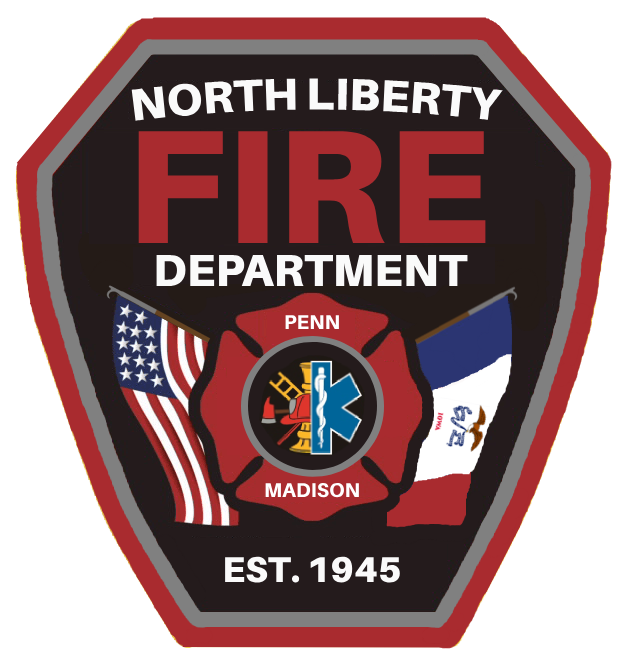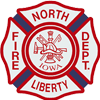Business Info
Fire Safety & Evacuation Plan
2003 INTERNATIONAL FIRE CODE, Section 404.3
404.2 Where required. An approved fire safety and evacuation plan shall be prepared and maintained for the following occupancies and buildings.
- Group A, other than Group A occupancies used exclusively for purposes of religious worship that have an occupant load less than 2,000. (Assembly)
- Group E. (Educational)
- Group H. (High-hazard)
- Group I. (Institutional)
- Group R-1. (Hotels & Motels)
- Group R-4. (Residential Care/Assisted Living)
- High-rise buildings. (Bldg. with occupiable floors more than 55ft above the lowest level of Fire Dept. access)
- Group M buildings having an occupant load of 500 or more persons or more than 100 persons above or below the lowest level of exit discharge. (Mercantile)
- Covered malls exceeding 50,000 square feet (4645 m2) in aggregate floor area.
- Underground buildings.
- Buildings with an atrium and having an occupancy in Group A, E or M.
Plans Must Contain:
- Type of evacuation for the specific building; full or, where approved, by selected floors only (staged evacuation).
- Procedures for employees who must remain to shut down critical equipment before they evacuate, if needed.
- Procedures for accounting for employees and occupants after evacuation has been completed.
- Identification and assignment of personnel responsible for emergency medical aid, if provided.
- The means of notifying occupants of a fire or emergency, and a description of the emergency voice/alarm communication system alert tone and preprogrammed voice messages, where provided.
- The preferred and any alternative means of reporting fires and other emergencies to the North Liberty Fire Department.
- Identification and assignment of personnel who can be contacted for further information or explanation of duties under the plan.
- Provide evacuation procedures for occupants and relocation plans (to a different site), if provided.
- Site plan(s) indicating the following:
- The occupancy assembly point outside of the building for each tenant as needed. ( Must be at least 100 ft from building)
- The locations of all fire hydrants on site or on the street adjacent to the site.
- The on site approved fire lanes.
- Floor plans identifying the locations of the following:
- Exits
- Primary evacuation routes.
- Secondary evacuation routes.
- Mobility impaired evacuation routes.
- Areas of refuge, if provided.
- Manual fire alarm pull stations.
- Portable fire extinguishers.
- Occupant use hose stations, if provided.
- A list of major fire hazards associated with the normal use and occupancy of the premises, including maintenance and housekeeping procedures.
- Identification and assignment of personnel responsible for maintenance of systems and equipment installed to prevent or control fires.
- Identification and assignment of personnel responsible for maintenance, housekeeping, and controlling fuel hazard sources.
- A list of Phone numbers for management and security.
- Procedures for handling the following types of additional emergencies:
- Severe weather
- Medical Emergencies
- Power Failures
- Elevator emergencies
- Bomb Threats
- Biological Threats
404.4 Maintenance. Building Emergency Plans shall be reviewed and/or updated annually or as necessitated by changes in staff assignments, occupancy, or the physical arrangement of the building.
404.5 Availability. Building Emergency Plans shall be available in the workplace for reference and review by employees, and copies shall be furnished to the North Liberty Fire Department for review and approval.
405 Emergency Evacuation Drills.
Emergency Evacuation Drills are required in the following occupancies:
- GROUP A (Assembly) Quarterly involving employees
- GROUP E (Educational) Iowa Code 100.31. Not less than two drills of each type shall be conducted between July 1 and December 31 of each year and not less than two drills of each type shall be conducted between January 1 and June 30 of each year.
- GROUP I (Institutional) Quarterly on each shift involving employees
- GROUP R-1 (Hotels, Motels, & boarding houses) on each shift involving employees
- GROUP R-4 (Residential Care/Assisted Living Facilities) on each shift involving employees
Although other occupancy types are not required by this code to conduct Emergency Evacuation Drills it is recommended that at least one Emergency Evacuation Drill be conducted each year for all other occupancy types. Emergency Evacuation Drills help to familiarize the occupants with evacuation procedures and can lessen the chance of injury or loss of life. Records should also be kept of these Emergency Evacuation Drills.
405.5 Record Keeping. Records shall be maintained of required emergency evacuation drills and include the following information:
- Identity of the person conducting the drill.
- Date and time of the drill.
- Notification method used. (fire alarm is required to be used if present)
- Staff members on duty and participating.
- Number of occupants evacuated. (Group E)
- Whether the drill was obstructed or unobstructed.
- Any problems encountered.
- Weather conditions. (Group E)
- Time required to evacuate completely.
406 Employee Training
Employees in; GROUPS A, E, H (High Hazard), I, R-1, R-4, High-rise buildings, GROUP M (Mercantile) buildings having an occupant load of 500 or more or more than 100 persons above or below the lowest level of exit discharge or having an atrium, Covered malls exceeding 50,000 square feet in aggregate floor area, or underground buildings shall be trained as part of a new employee orientation and at least annually in the procedures and their duties of the Emergency Plan, Fire Prevention, Evacuation, and Fire-fighting equipment and records shall be kept and made accessible to the North Liberty Fire Department when requested.
406.3 Employee Training Program.
Employees shall be trained in Fire Prevention including, fire hazards of the materials and processes to which they are exposed and how to prevent fires in the conduct of their assigned duties. They shall also be familiarized with the fire alarm and evacuation signals, their assigned duties in the event of an alarm or emergency, evacuation routes, areas of refuge (if available), exterior assembly areas, and procedures for evacuation. Employees that are assigned fire-fighting duties shall be trained to know the locations and proper use of portable fire extinguishers or other manual fire-fighting equipment and protective clothing or equipment required for its safe and proper use.

